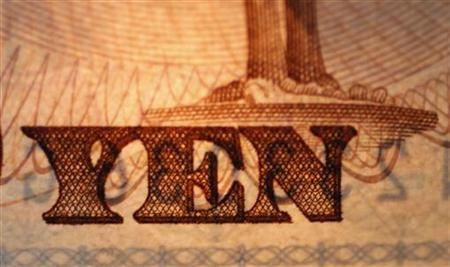Japanese Yen Touches 30-Month Low Amid Stimulus Measure Hopes

The Japanese yen hit the lowest level against the U.S. dollar in the last 30 months Monday amid reports that policymakers in Japan were under pressure to further loosen the monetary policy to revive the economy.
The dollar touched 89.67 yen Monday -- a level not crossed since June 2010 -- as market participants returned to the mood of risk aversion. The relative prospects for monetary policy have been the key drivers of the yen-dollar exchange rate in recent months.
“Investor’s perception of so called Abenomics – the description given to the newly elected government’s aggressive policy expansion plans - continues to dictate Japanese yen weakness. Falling nearly 15 percent in the past three months, Japanese yen selling has been notable for its consistency both before and after Japan’s Dec. 16 elections,” Credit Agricole said in a note.
Last month, the Bank of Japan decided to raise the ceiling on its asset purchase program by 10 trillion yen ($120 billion) to 101 trillion yen. The central bank came under political pressure to announce the stimulus measures after the Liberal Democratic Party (LDP) won a landslide victory in the general elections in December.
Last week, the government approved this much-needed stimulus package, which is expected to boost the country’s economy and regain the economic growth momentum. The Japanese government, led by Prime Minister Shinzo Abe, also made the promise that it would continue with putting pressure of the Bank of Japan to achieve the target of 2 percent inflation this year.
With Japan's manufacturing activity contracting to a 44-month low in December, investors feel that there is an urgent need to take measures for enhancing the growth potential of the economy. According to the data released by Markit/JMMA last month, the headline Purchasing Managers’ Index (PMI) fell to 45 in December from 46.5 in November.
The data released in November by the Cabinet Office showed that the country’s GDP, which measures the annualized change in the inflation-adjusted value of all goods and services produced by the economy, shrank to 0.9 percent in the quarter ending Sept. 30, from a 0.1 percent rise in the previous three months.
Market players sense that more measures, other than the currently available stimulus measures, will be required to revive the growth momentum. Investors see a critical need for the policymakers to evolve measures that strengthen the growth potential of the economy, which many expect to be announced this year.
© Copyright IBTimes 2024. All rights reserved.




















